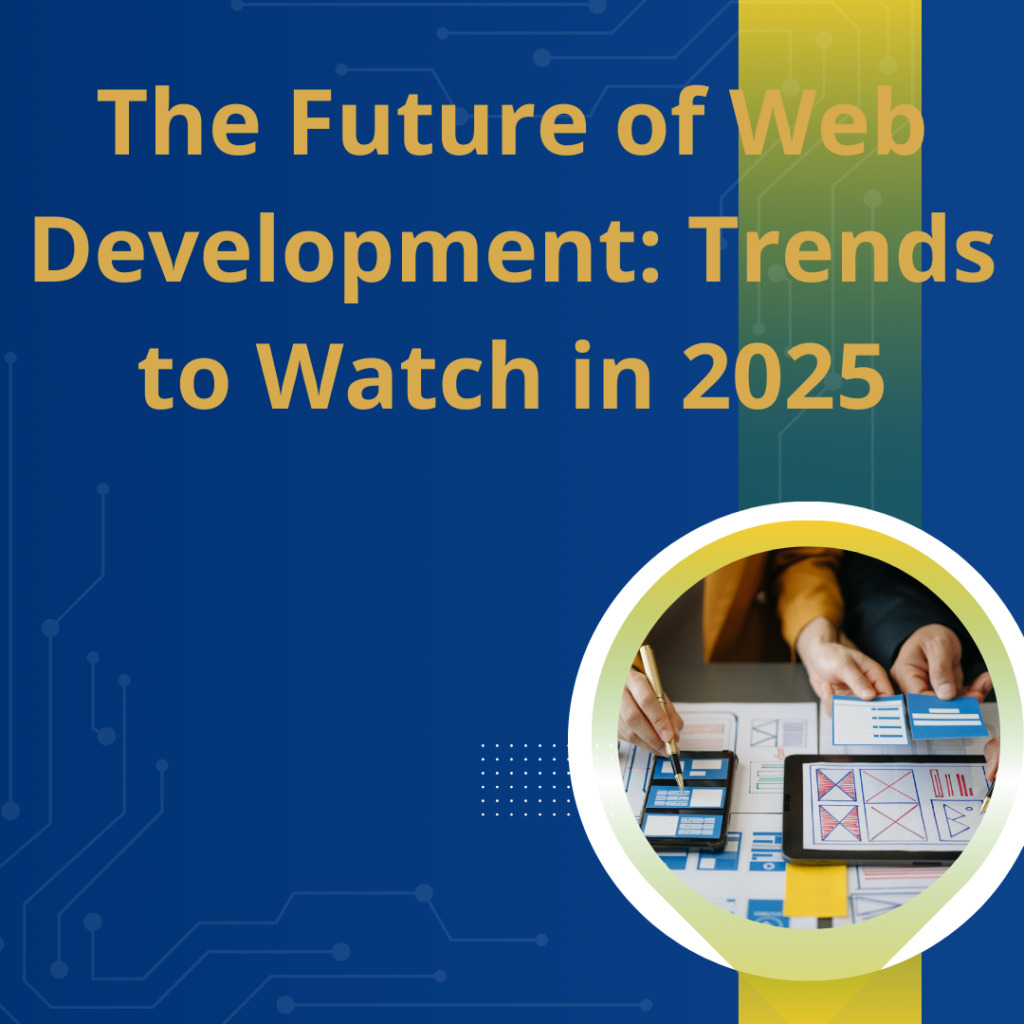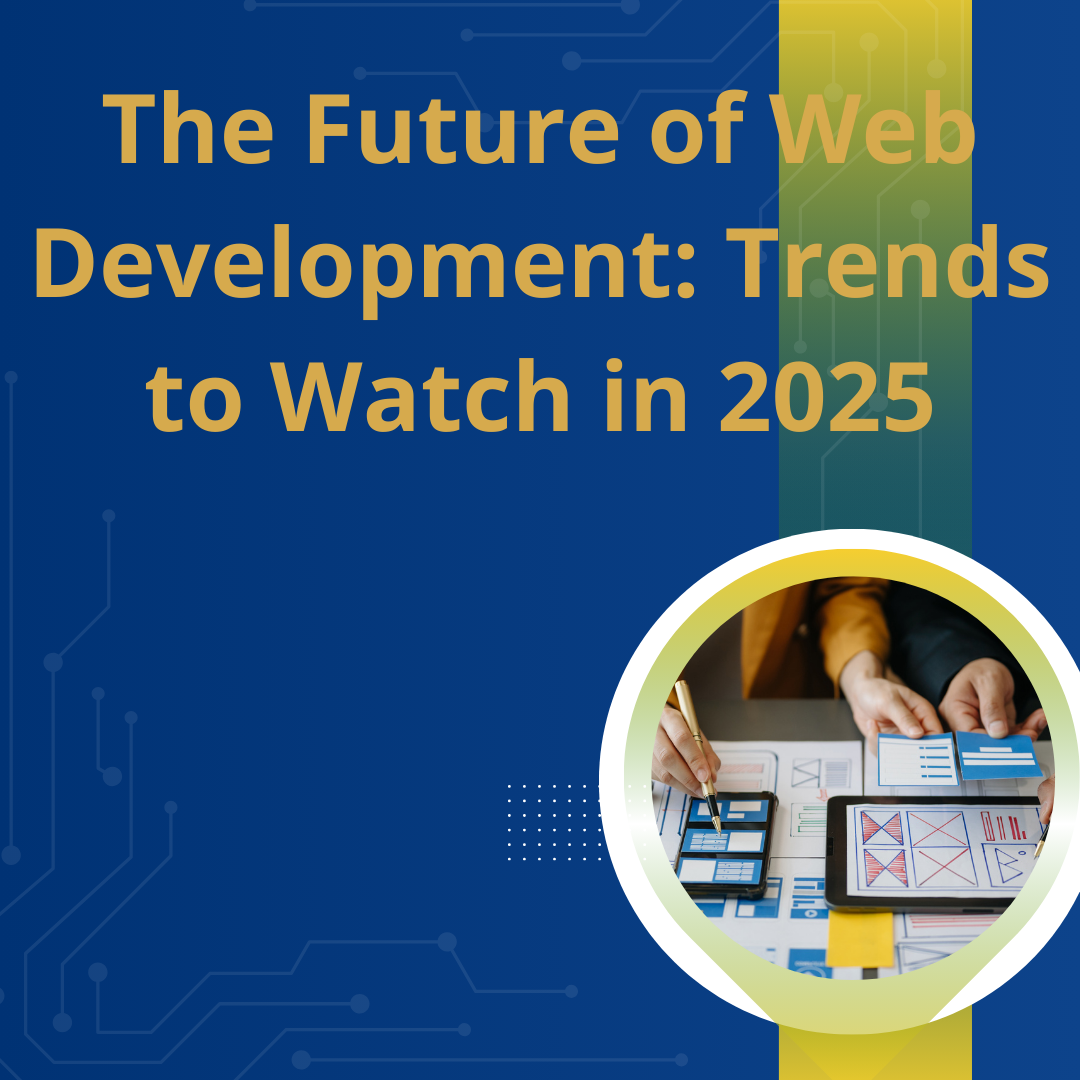The Future of Web Development: Trends to Watch in 2025
The emerging trends in web development show that the ever-changing pace of the entire developing world continuously nurtures the need for faster, secure, and captivating websites. By the time we get to 2025, the face of regular web development would have changed dramatically, all thanks to the evolution of technology, the influence of the users, and the introduction of new ideology in the art of designing. The Future of Web Development: Trends to Watch in 2025.The following post details the most likely trends that will define the future of web development by the year 2025.
1. Web Development Merging with Machine Learning and AI
AI and Machine Learning have already proven their mettle in various sectors, and web development has also not been spared from that particular revolution. In future, AI would make the web development industry much better by creating a means of enabling developers to create smarter and more customized websites and applications.
The AI tools will help developers in automating mundane work activities like generating codes, testing, or debugging them. It will analyze a big amount of data for patterns recognition, bug detection, and also suggestions for improvements on the code to help the speed and efficiency of the development process. In addition to this, AI algorithms will help websites become users to bring forth personalized page content and recommendations based on behavior to improve their experience.
Chatbots and Virtual Assistants take it one step further. These will get incorporated into the websites for a real-time customer care service that in turn improves user engagement and all around overall enhanced user experience. Such AI functionalities will be more contextualized and human-like creative responses-they will henceforth be conceived as intuitive features.

2. Progressive Web Apps (PWAs) as the Standard
In the last few years, tremendous traction towards Progressive Web Apps (PWAs) has been present, which is further expected to take by 2025-the yardstick in web development. The PWAs are a perfect combination of what is best in the web application and mobile application, thus making sure that the experience of users officially becomes fast, reliable, and entertaining across devices.
The important point that needs to be understood in this aspect is that PWAs don’t just work like traditional websites but can also work offline, receive push notifications, and, most importantly, load faster in low-network conditions. The Future of Web Development: Trends to Watch in 2025.Really, it is built by the normal web languages like HTML, CSS, and JavaScript, but the reason why it highly becomes desirable for businesses that want to great user experiences is its delivery.
The Future Demand on PWAs Event Happenings is from Users Casting. By 2025, one can expect businesses to take advantage of PWAs to address a worldwide target audience, reduce development costs (the necessity to manage just one codebase), and ensure a seamless user experience across channels.
3. Serverless Architecture for Scalability and Efficiency
In this model, borrowers get an amount where they build and execute all these applications without wasting time taking care of the basic servers. Businesses like this operating model because it allows for efficient and quick scaling of their applications, minus the burden associated with managing the necessary infrastructure.
By the year 2025, there will be a sweeping prevalence of serverless architecture practice among web developers. Such a setup will include serverless frameworks, including AWS Lambda, Google Cloud Functions, and Azure Functions, which will be widely used for building microservices and event-driven applications. A few small advantages of reduced infrastructure costs, automatic scaling depending on demand.
It provides a faster development cycle accompanied with improved agility; i.e. the developer gets to focus mainly on writing the business logic without having to worry about managing the actual servers. The Future of Web Development: Trends to Watch in 2025.The shift towards a server less model will present faster app delivery, improved resource consumption and an enhanced experience for end users.
4. Web Assembly (wasm) for Faster Web Performance
WebAssembly (Wasm) is a binary format optimized for low-level code execution inside browsers, where developers can run high-performance code on the web. Like JavaScript, it complements other languages’ scripts like C, C++, and Rust-another language from which code can be compiled and directly executed in a browser.
As fast and powerful web applications become ever more popular. In 2025, we might see much more development sharing. Web Assembly, making possible computationally intensive operations like image processing, video editing, and gaming directly in the browser instead of server processing.
Native performance for web applications means that websites will deal with more increasingly complex tasks in real-time. This will make them faster, more interactive, and ultimately a better overall user experience. It will hold great promise for reducing latency and delivering more heavily immersive experiences, especially with gaming or 3D modeling and data visualization, for example.
5. Improving Web Security with Zero-Trust Models
There will be more sophisticated cyber threats at the application level. Securing web applications, as ever, will remain an important priority. By 2025, zero-trust security will be mandatory.
With zero-trust models, web developers will be able to create secure digital platforms. By verifying every interaction in an individual’s profile. The features would be as deemed by many to be Multi-Factor Authentication (MFA), encryption, and Identity and Access Management (IAM).
With more and more organizations adopting cloud services coupled with the global trend on remote work. There will be even greater demand for zero-trust security measures. That address web application protection in a growing globalized, interconnected market able to respond to emerging threats. The Future of Web Development: Trends to Watch in 2025.
6. Motion UI and Microinteractions for Engaging User Experiences
User experience, or UX, has long been an integral component in web development and will for years to come remain a major influential factor in developing aesthetically gorgeous sites that also provide great interaction. Among the many exciting web development trends to capitalize on is motion graphics through animations and clear transitions by 2025.
Microinteractions are very small animations that prompt responses to action that the user may take, like clicking a button, filling something in a form, or hovering over an element. Such tiny but significant animations are handy to guide along the way through site or application interactions that will make them feel targeted and enjoyable.
Motion UI as well as microinteractions will help keep entertaining interactions visible to the users across websites and drip the visitors in when kept into the motion design. Not only could websites become more dynamic and interesting to watch. But as well, they may also keep them engaged and satisfied.
7. Voice Search and Conversational Interfaces
The requirement for voice searching is growing, along with the development of voice assistants such as Siri, Alexa. Google Assistant, making it demand an interactive experience to be more used. Between websites and applications in the near future, with the development of smart devices and IoTs.
Web designers will, by then, have to focus on natural language processing (NLP). Above all, they have to make their site audio-searchable. There will be increasing instances of voice-enabled navigation, voice search. And customer support, making it a little easier for users to use the website conversationally.
All of these changes will make the users’ experiences more personalized and hands-free. AI will tell the websites to chase down voice commands better and better to make it seem more natural and intuitive.
.
8. 5G Connectivity and its Impact on Web Development
The innovative rollout of 5G networks will disrupt web development with higher internet speed, reduced latency, and better connectivity. 5G web developers will create applications that are vast in data and immersive. Such as high-definition video streaming and all activities of virtual reality (VR) and augmented reality (AR).
The developers will be able to create their works even bigger, more interactive, more real-time data processing, and high-quality media to be delivered . End users with the 5G-enabled speed and capabilities of the tablets or mobile phones. However, they will also be able to support a lot more latency-sensitive applications. Such as online games, video conferencing, and other live broadcasting services.
In 2025, 5G will decree many changes in web application design and functionality. Paving the road to the next-generation experience that was not possible earlier using other networks.
9. Sustainable Web Development
As global environmental concerns increase, the attention on sustainable web development will grow. By 2025, developers will have to create energy-efficient and environmentally friendly websites and applications.
Sustainable web development operates for the least possible carbon footprint of digital products. Using code optimization, load minimization on servers, and performance improvements of sites. This involves energy efficiency through hosting solutions for websites, image size optimization, and access to current. Internet technologies to reduce demand on resources.
Green hosting services, renewable energy sources, and eco-design practices will saturate the industry even more in the near future. This makes the entire business reason for making sustainable web development-the environment. The value of consumers because they will look at how a company operates concerning its environmental responsibility.
10. Low-Code and No-Code Development
Low-code and no-code platforms are changing the evolution of web applications among users. Who have no experience in coding in creating applications and websites. Which simplify the process for development to open access for a wider audience.
By many non-technical entrepreneurs or businesses aiming for fast prototyping and deployment of websites. Applications, low-code and no-code development will be widely adopted by 2025.
They would democratize web development for many more to design and build digital products without depending on a professional developer.
For the professional developer, low-code and no-code platforms will simplify development. Because they are freed from doing repetitive tasks, allowing them to focus all their energies on much more complex work. These platforms will continuously evolve and develop even greater features and customization options to give. Users more power to create very advanced digital experiences.
Finality
A future of web development that will most definitely witness most of its little changes by 2025. Making applications and websites much faster, smarter, and more immersed than ever before. With AI and machine learning. PWAs, serverless architecture, and so many more technologies. At the disposal of web developers now, there will be a plethora of innovative tools. Ambitions in remaining relevant in the field by 2025 and thereafter.


